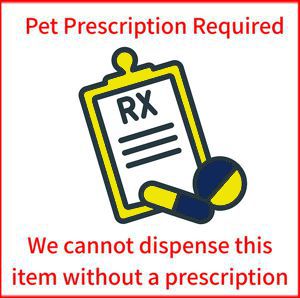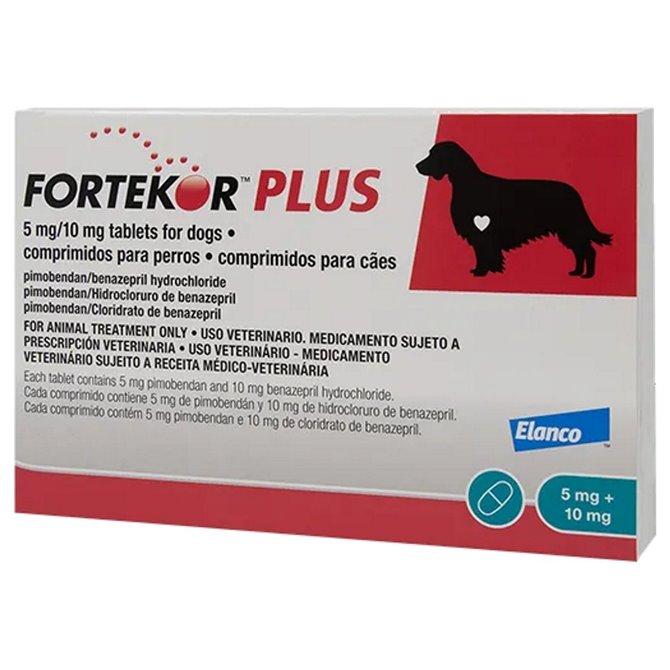
Fortekor Plus 5mg/10mg Tablet for Dogs - Pack of 30
794521
Fortekor Plus 5mg/10mg Tablets are indicated for the treatment of congestive heart failure due to atrioventricular valve insufficiency or dilated cardiomyopathy in dogs weighing 2.5-10kg. VETERINARY PRESCRIPTION REQUIRED
Product Features
- Pack Size: - Pack of 30
- Target Animal: - Dog (Canine)
- Related Condition: - For the treatment of congestive heart failure due to atrioventricular valve insufficiency or dilated cardiomyopathy in dogs
- Pet Prescription Required?: - Yes
- Active Ingredient: - Benazepril Hydrochloride, Pimobendan
- Product Name: - 5mg/10mg Fortekor Plus tablets for dogs
More Information
Description
5mg/10mg Fortekor Plus tablets for dogs
Fortekor Plus may only be supplied with a valid veterinary prescription issued by your vet. You should only purchase Fortekor Plus if you have or are in the process of arranging such a prescription. See information bar for further details.
Cardiovascular and respiratory preparations Active ingredient: Benazepril Hydrochloride, Pimobendan Product:Fortekor Plus 1.25 mg/2.5 mg tablets for dogs Fortekor Plus 5 mg/10 mg tablets for dogs Product index: Fortekor Plus Qualitative and quantitative composition Each tablet contains: Active substances: Pimobendan Benazepril hydrochloride FORTEKOR PLUS 1.25 mg/2.5 mg tablets 1.25 mg 2.5 mg FORTEKOR PLUS 5 mg/10 mg tablets 5 mg 10 mg Excipients: FORTEKOR PLUS 1.25 mg/2.5 mg tablets Iron oxide brown E172 FORTEKOR PLUS 5 mg/10 mg tablets 0.5 mg 2 mg For the full list of excipients, see Pharmaceutical Particulars Pharmaceutical form Tablets. White and light brown oval bilayer tablets with a score line on both sides. The tablets can be divided into equal halves.
Fortekor Plus tablets are used for the treatment of congestive heart failure due to atrioventricular valve insufficiency or dilated cardiomyopathy in dogs. Fortekor Plus tablets offer a fixed dose combination and should only be used in patients whose clinical signs are successfully controlled by administration of the same doses of the individual components (pimobendan and benazepril hydrochloride) given concurrently.
Do not use Fortekor Plus tablets in cases of hypertrophic cardiomyopathies or clinical conditions where an augmentation of cardiac output is not possible for functional or anatomical reasons (e.g. aortic or pulmonary stenosis). Do not use in cases of hypotension, hypovolaemia, hyponatraemia or acute renal failure. Do not use during pregnancy and lactation (see section below).
Do not use Fortekor Plus tablets in case of hypersensitivity to the active substances or to any of the excipients. Special warnings for each target species None Special precautions for use Special precautions for use in animals In cases of chronic kidney disease, it is recommended to check the dog’s hydration status before starting therapy, and to monitor its plasma creatinine and blood erythrocyte counts during therapy. As pimobendan is metabolised in the liver, Fortekor Plus tablets should not be administered to dogs with severe hepatic insufficiency. The efficacy and safety of the product has not been established in dogs below 2.5 kg bodyweight or under 4 months of age. Special precautions to be taken by the person administering the veterinary medicinal product to animals Wash hands after use. People with known hypersensitivity to pimobendan or benazepril hydrochloride should avoid contact with the veterinary medicinal product. In case of accidental ingestion, seek medical advice immediately and show the package leaflet or the label to the physician. Pregnant women should take special care to avoid accidental oral exposure to Fortekor Plus tablets because angiotensin converting enzyme (ACE) inhibitors have been found to affect the unborn child during pregnancy in humans.
Adverse reactions Pimobendan A moderate positive chronotropic effect and vomiting may occur in rare cases. However, these effects are dose-dependent and can be avoided by reducing the dose in those cases. In rare cases transient diarrhoea, anorexia or lethargy have been observed. Benazepril hydrochloride A small number of dogs may exhibit transient vomiting, incoordination or signs of fatigue. In dogs with chronic kidney disease, benazepril may increase plasma creatinine concentrations at the start of therapy. A moderate increase in plasma creatinine concentrations following administration of ACE inhibitors is compatible with the reduction in glomerular hypertension induced by these agents, and is therefore not necessarily a reason to stop therapy in the absence of other signs. The frequency of adverse reactions is defined using the following convention: - very common (more than 1 in 10 animals displaying adverse reactions during the course of one treatment) - common (more than 1 but less than 10 animals in 100 animals) - uncommon (more than 1 but less than 10 animals in 1,000 animals) - rare (more than 1 but less than 10 animals in 10,000 animals) - very rare (less than 1 animal in 10,000 animals, including isolated reports). Use during pregnancy, lactation or lay
Do not use Fortekor Plus tablets during pregnancy or lactation. The safety of FORTEKOR PLUS has not been tested in breeding, pregnant or lactating dogs. Laboratory studies in rats and rabbits with pimobendan have shown foetotoxic effects at maternotoxic doses. Laboratory studies in rats and rabbits with pimobendan have not shown any effect on fertility. Laboratory studies in rats have shown that pimobendan is excreted into milk. Laboratory studies in rats with benazepril have shown foetotoxic effects (foetal urinary tract malformation) at maternally non-toxic doses. It is not known if benazepril is secreted into the milk of lactating bitches. Interactions In dogs with congestive heart failure, benazepril hydrochloride and pimobendan have been given in combination with digoxin and diuretics without demonstrable adverse interactions. In pharmacological studies no interaction between the cardiac glycoside ouabain and pimobendan was detected. The pimobendan-induced increase in contractility of the heart is attenuated in the presence of the calcium antagonist verapamil and the ß-antagonist propranolol. In man, the combination of angiotensin converting enzyme (ACE) inhibitors and non-steroidal anti-inflammatory drugs (NSAIDs) can lead to reduced anti-hypertensive efficacy or impaired renal function. Therefore the concurrent use of FORTEKOR PLUS with NSAIDs or any other medications with a hypotensive effect should be considered carefully before using such combinations.
The combination of FORTEKOR PLUS and other anti-hypertensive agents (e.g. calcium channel blockers, β-blockers or diuretics), anaesthetics or sedatives may lead to additive hypotensive effects. Renal function and signs of hypotension (lethargy, weakness, etc) should be monitored closely and treated as necessary. Interactions with potassium-sparing diuretics such as spironolactone, triamterene or amiloride cannot be ruled out. It is therefore recommended to monitor plasma potassium levels when using FORTEKOR PLUS in combination with a potassium sparing diuretic because of the risk of hyperkalaemia. Amounts to be administered and administration route For oral use.
Dose and treatment schedule: FORTEKOR PLUS is a fixed combination product which should only be used in dogs which require both active substances to be administered concomitantly at this fixed dose. The recommended dose range for FORTEKOR PLUS is 0.25–0.5 mg pimobendan per kg bodyweight and 0.5–1 mg benazepril hydrochloride per kg bodyweight divided into two daily doses. FORTEKOR PLUS tablets should be administered orally, twice daily 12 hours apart (morning and evening) and approximately 1 hour before feeding. The tablets are breakable along the score line. In case of overdose with Fortekor Plus tablets the dog should be treated symptomatically. Transient reversible hypotension may occur in accidental overdose. Therapy should consist of intravenous infusion(s) of warm isotonic saline as required. Withdrawal periods Not applicable. Pharmacological particulars Pharmacotherapeutic group: ACE inhibitors, combinations. ATCvet code: QC09BX90 Pharmacodynamic properties Benazepril hydrochloride is a prodrug which is hydrolysed in vivo to its active metabolite, benazeprilat. Benazeprilat is a highly potent and selective inhibitor of ACE, thus preventing the conversion of inactive angiotensin I to active angiotensin II and thereby also reducing the synthesis of aldosterone. Therefore, benazepril blocks effects mediated by angiotensin II and aldosterone, including the vasoconstriction of arteries and veins, the retention of sodium and water by the kidney, and remodelling effects (including pathological cardiac hypertrophy and degenerative renal changes). In dogs with congestive heart failure benazepril hydrochloride reduces the blood pressure and volume load on the heart. Benazepril increased the time to worsening of heart failure, and the time to death, improved clinical condition, reduced cough and improved exercise tolerance in dogs with symptomatic congestive heart failure caused by valvular disease or dilated cardiomyopathy.
Pimobendan, a benzimidazole-pyridazinone derivative, is a non-sympathomimetic, non-glycoside inotropic substance with potent vasodilating properties. It increases the calcium sensitivity of cardiac myofilaments and inhibits phosphodiesterase (type III). It also exhibits a vasodilatory action through the inhibition of phosphodiesterase type III activity. Pharmacokinetic properties Absorption Following oral administration of pimobendan alone the absolute bioavailability of the active ingredient is 60–63%. Since this bioavailability is considerably reduced when pimobendan is administered with food or shortly thereafter, it is recommended to treat animals approximately 1 hour before feeding. After oral administration of benazepril hydrochloride alone, the systemic bioavailability is incomplete (~13%) in dogs due to incomplete absorption (38%) and first pass metabolism. Levels of benazepril decline quickly as the drug is partially metabolised by liver enzymes to benazeprilat. There is no significant difference in the pharmacokinetics of benazeprilat when benazepril hydrochloride is administered to fed or fasted dogs. After the oral administration of FORTEKOR PLUS tablets at twice the recommended dose to dogs, peak levels of both compounds are attained rapidly (Tmax 0.5 h for benazepril hydrochloride and 0.85 h for pimobendan) with peak concentrations (Cmax) for benazepril hydrochloride of 35.1 ng/ml and 16.5 ng/ml for pimobendan. Peak benazeprilat levels are seen after 1.9 h with peak concentrations (Cmax) of 43.4 ng/ml. Distribution The volume of distribution at steady state is 2.6 l/kg after intravenous administration of pimobendan alone, indicating that pimobendan is distributed readily into the tissues. The mean plasma protein binding in vitro is 93%. Benazeprilat concentrations decline biphasically: the initial fast phase (t1/2 = 1.7 h) represents elimination of the free drug, while the terminal phase (t1/2 = 19 h) reflects the release of benazeprilat that was bound to ACE, mainly in the tissues.
Benazepril and benazeprilat are extensively bound to plasma proteins (85–90%), and in the tissues they are found mainly in the lung, liver and kidney. Repeated administration of benazepril hydrochloride leads to slight bioaccumulation of benazeprilat (R = 1.47), steady state being achieved within a few days (4 days). Metabolism Pimobendan is oxidatively demethylated to its major active metabolite, O-desmethyl pimobendan. Further metabolic pathways are phase II, glucuronides and sulfates. Benazepril hydrochloride is partially metabolised by liver enzymes to the active metabolite benazeprilat. Elimination The plasma elimination half-life of pimobendan when dosed with FORTEKOR PLUS tablets is 0.5 h, consistent with the high clearance of the compound. The main active metabolite of pimobendan is eliminated with a plasma elimination half-life of 2.6 h. Pimobendan is excreted principally in the faeces and to a lesser extent in the urine. The plasma elimination half-life of benazepril hydrochloride and benazeprilat, when dosed with FORTEKOR PLUS tablets is 0.36 h and 8.36 h, respectively. Benazeprilat is excreted via the biliary (54%) and urinary (46%) routes in dogs. The clearance of benazeprilat is not affected in dogs with impaired renal function; therefore no adjustment of the FORTEKOR PLUS dose is required in dogs with renal insufficiency. Pharmaceutical particulars Excipients Artificial Special Dry Flavour Basic butylated methacrylate copolymer Copovidone Croscarmellose sodium Crospovidone Dibutyl sebacate Hypromellose Iron oxide brown E172 Lactose monohydrate Magnesium stearate Maize starch Microcrystalline cellulose Polysorbate 80 Povidone Silica, colloidal anhydrous Silicon dioxide anhydrous Sodium laurilsulfate Starch pregelatinised Succinic acid Sucrose Major incompatibilities Not applicable. Shelf life Shelf life of the veterinary medicinal product as packaged for sale: 18 months Any remaining half tablets should be discarded after 1 day. Special precautions for storage Store Fortekor Plus tablets below 25 °C. Keep the blister in the outer carton in order to protect from moisture. Any remaining half tablet should be placed back in the opened blister and stored (for a maximum of 1 day) in the original cardboard carton out of the sight and reach of children. Immediate packaging Both tablet strengths are packaged in aluminium/aluminium blisters packaged into an outer cardboard box. 1.25 mg/2.5 mg tablets: pack sizes of 30 or 60 tablets. 5 mg/10 mg tablets: pack sizes of 30 or 60 tablets. Not all pack sizes may be marketed. Disposal Any unused veterinary medicinal product or waste materials derived from such veterinary medicinal product should be disposed of in accordance with local requirements. Marketing Authorisation Holder (if different from distributor) Elanco GmbH Heinz-Lohmann-Str. 4 27472 Cuxhaven Germany Marketing Authorisation Number EU/2/15/185/001 (1 x 30 tablets, 1.25 mg/2.5 mg) EU/2/15/185/002 (1 x 60 tablets, 1.25 mg/2.5 mg) EU/2/15/185/003 (1 x 30 tablets, 5 mg/10 mg) EU/2/15/185/004 (1 x 60 tablets, 5 mg/10 mg) Significant changes Date of the first authorisation or date of renewal Date of first authorisation: 08/09/2015 Date of revision of the text Detailed information on this veterinary medicinal product is available on the website of the European Medicines Agency http://www.ema.europa.eu/ . Any other information Nil Legal category
Legal category:
Fortekor Plus is a POM-V (Pet Prescription Required)
You may also like
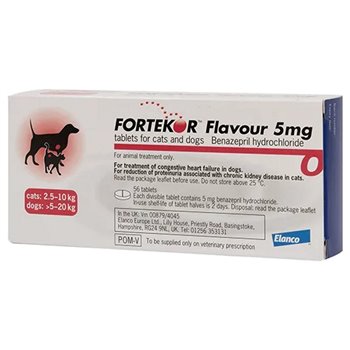
5mg Fortekor Flavour Tablet - per Tablet
5mg Fortekor Flavoured is a heart failure treatment for dogs. It contains the active ingredient benazepril hydrochloride.
Fortekor 5mg is given orally and is broken down into an efficient inhibitor of angiotensin-converting enzyme (ACE), reducing blood volume, sodium and water levels, as well as making it harder for your dog's heart to pump effectively.
VET PRESCRIPTION REQUIRED
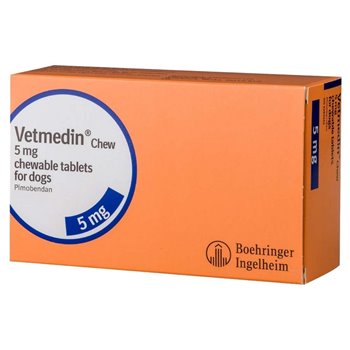
Vetmedin 5mg Flavour Tablet - per Tablet
Vetmedin 5mg Flavour Tablets are used for the treatment of canine congestive heart failure in larger dogs originating from dilated cardiomyopathy or valvular insufficiency. VET PRESCRIPTION REQUIRED
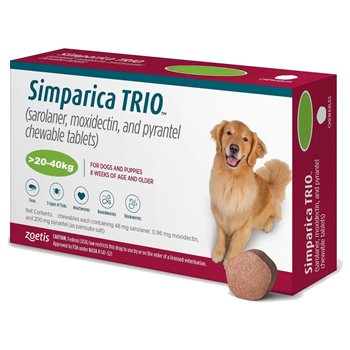
Simparica Trio 48mg for Dogs - Pack of 3 Chewable Tablets
Simparica Trio 48mg Chewable Tablets for Dogs (20kg-40kg) are indicated for the treatment of dogs with, or at risk from, mixed external and internal parasitic infestations. Simparica Trio is exclusively indicated when use against ticks or fleas, and gastrointestinal nematodes are indicated at the same time. Simparica Trio also provides concurrent efficacy for the prevention of heartworm disease and angiostrongylosis. Pack of 3
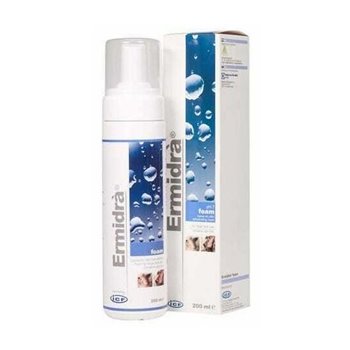
Ermidra Hydrating Cleansing Foam for Dogs & Cats - 200ml
Ermidra Cleansing & Rehydrating Foam is a specially formulated cleaning foam that offers a quick and effective way to cleanse your pet's coat and moisturise their skin. The primary ingredient, oat milk, is rich in Vitamins B1, B2, and B6, ensuring that while the foam cleans, it also nourishes.
The beauty of Ermidra Foam for Dogs and Cats lies in its simplicity. Once applied, the foam works its way through the fur, reaching down to the skin. It effectively washes and refreshes the skin and coat without the need for water. This is particularly beneficial for pets that are water-averse or in situations where a full bath isn't feasible.
200ml Bottle




